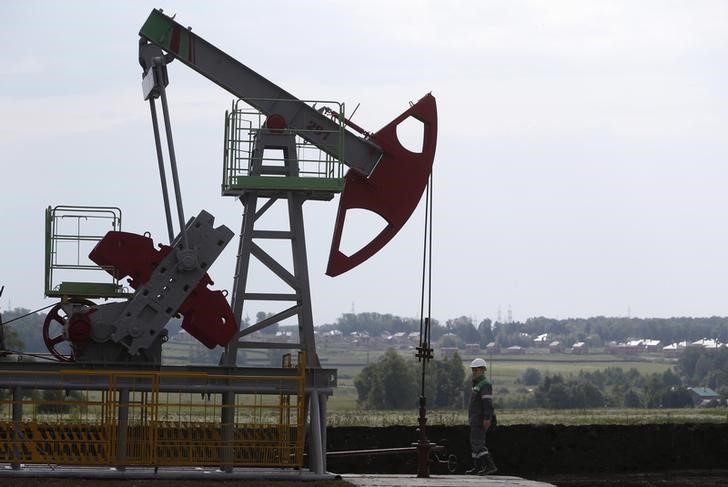* U.S. crude inventories fall - EIA
* But exports surge while net imports drop to record low
* U.S. crude output above 10 million bpd
* The U.S. shale revolution: http://tmsnrt.rs/2EtJgen
By Henning Gloystein
SINGAPORE, Feb 23 (Reuters) - Oil prices edged up on Friday, supported by lower U.S. crude inventories, but gains were capped by a surge in U.S. exports that dragged net imports in the world's biggest fuel consumer to a record low.
U.S. West Texas Intermediate (WTI) crude futures CLc1 were at $62.89 a barrel at 0206 GMT, up 12 cents, or 0.2 percent, from their last settlement.
Brent crude futures LCOc1 were up 5 cents, at $66.44 a barrel.
U.S. crude oil stockpiles C-STK-T-EIA fell by 1.6 million barrels in the week to Feb. 16, to 420.48 million barrels, the Energy Information Administration (EIA) said on Thursday.
"Part of that (inventory fall) is the shape of the oil curve which makes it uneconomic to store product," said Greg McKenna, chief market strategist at futures brokerage AxiTrader.
The forward price curves for Brent 0#LCO: and WTI 0#CL: are in a shape known as backwardation in which prices for immediate delivery are more expensive than those for later sale, making it uneconomical for traders to buy and store oil.
The fall in inventories initially sparked price rises in late Thursday trading, but momentum faded in Asia on Friday as the focus turned on high U.S. exports. crude exports jumped to just above 2 million barrels per day (bpd) last week, the EIA data showed, close to a record high of 2.1 million hit in October. That helped pull down net imports to the lowest level on record of below 5 million bpd. trade swings in the world's biggest oil consuming country put prices under pressure on Friday, traders said.
U.S. crude oil production C-OUT-T-EIA was virtually unchanged at 10.27 million barrels per day (bpd), close to levels of top producer Russia and more than OPEC-kingpin Saudi Arabia pumps.
Overall, however, oil markets remain well supported due to demand-growth coinciding with production restraint led by the Organization of the Petroleum Exporting Countries (OPEC) and Russia.
<^^^^^^^^^^^^^^^^^^^^^^^^^^^^^^^^^^^^^^^^^^^^^^^^^^^^^^^^^^^ GRAPHIC: U.S. oil production and storage levels
http://reut.rs/2EM6YFY GRAPHIC: The U.S. shale revolution:
http://tmsnrt.rs/2EtJgen
^^^^^^^^^^^^^^^^^^^^^^^^^^^^^^^^^^^^^^^^^^^^^^^^^^^^^^^^^^^>
